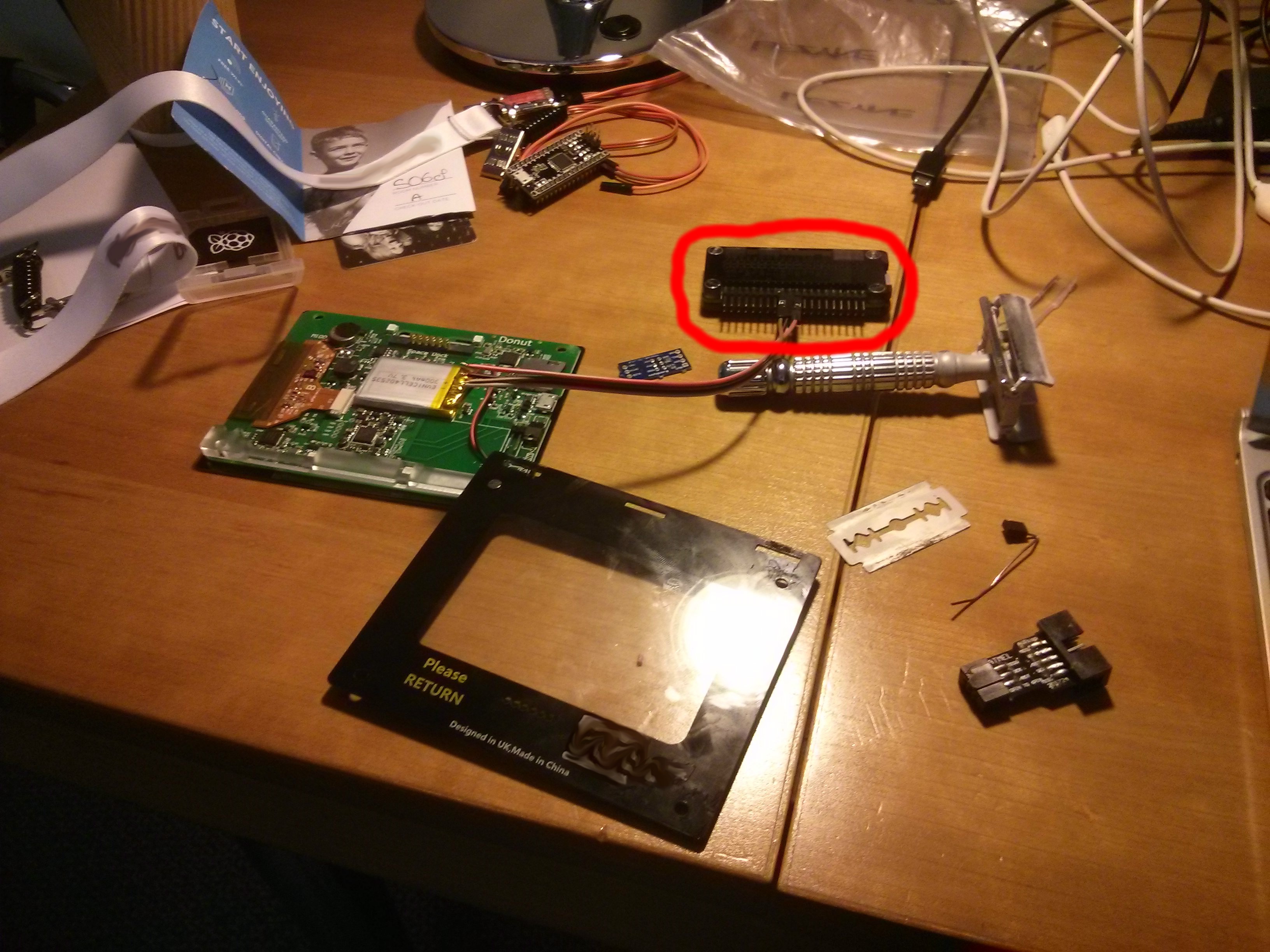I got a private message this week asking about the status of this project, which means I definitely haven't updated it in too long!
After the hard-drive debacle of the last log, I never really got back into this project in-ernest, other than to reconstruct my build environment. So, the actual functional state of things is about where it was then (but I have written a little more documentation, and made some improvements to the webserver).
Use in the wild
In the meantime, I have been using my Gadget a reasonable amount. So far mainly for talking to i2c things (Like #picopixel), programming AVRs, and as a mega-super-overkill USB-serial adapter. So actually, I'm already calling that a win - I don't need to carry a Pi, USB-serial adapter and AVR programmer, I can just chuck Gadget in my bag and know that I'm set
A few weeks back I was at a conference where we had bluetooth-enabled badges which effectively let you exchange contact details with other delegates by tapping the badges together. They had e-ink screens showing a business-card type screen and maps/schedules for the conference.
That e-ink screen was just begging to have something else put on it, so I spent some of my time trying to reverse engineer the thing, helped by Gadget:

As you can see, I didn't really have the right equipment to do very well. I used my razor's blade for wire-stripping, twist-ties as wire, and Arduino and Gadget. The goal was to capture the traffic from those brass pins just above the battery (success, via AVR programmed via Gadget), and to dump the SPI flash (using Gadget - fail, due to not being able to hold 8 dodgy wires onto an SOIC package while typing). Still, it was entertaining, and I was glad I had Gadget with me.
In the end, I failed at my goal (and the CTO of the company that made the badges told me that actually the flash data was encrypted, so perhaps even if I had dumped it, that would only have been the beginning).
But, it taught me two things:
1. I need a 'proper' logic analyser on Gadget
2. Always take a multimeter!
Next Steps
Buildroot 2016.05 was just released, which includes support for Google Go (which I use for some of my utilities). So, the next thing for me to do is switch over to 2016.05, and update the kernel to 4.6
After that, I'll start putting everything together "properly" in buildroot (there's a great presentation on that here: http://elinux.org/images/2/2a/Using-buildroot-real-project.pdf), at which point I can publish all the source and it should be easily reproducable.
I'm not looking to add any more functionality until after I've got that repeatable Buildroot workflow published, and then I can start incrementally adding features/packages.
Top of the list is probably piscope! I'm interested to see how that works out.
For those who don't have a linux box, or the inclination to build their own disk images, I'll try to host some images somewhere too.
If anyone is interested in helping to get things working on Windows/Mac please let me know!
Discussions
Become a Hackaday.io Member
Create an account to leave a comment. Already have an account? Log In.